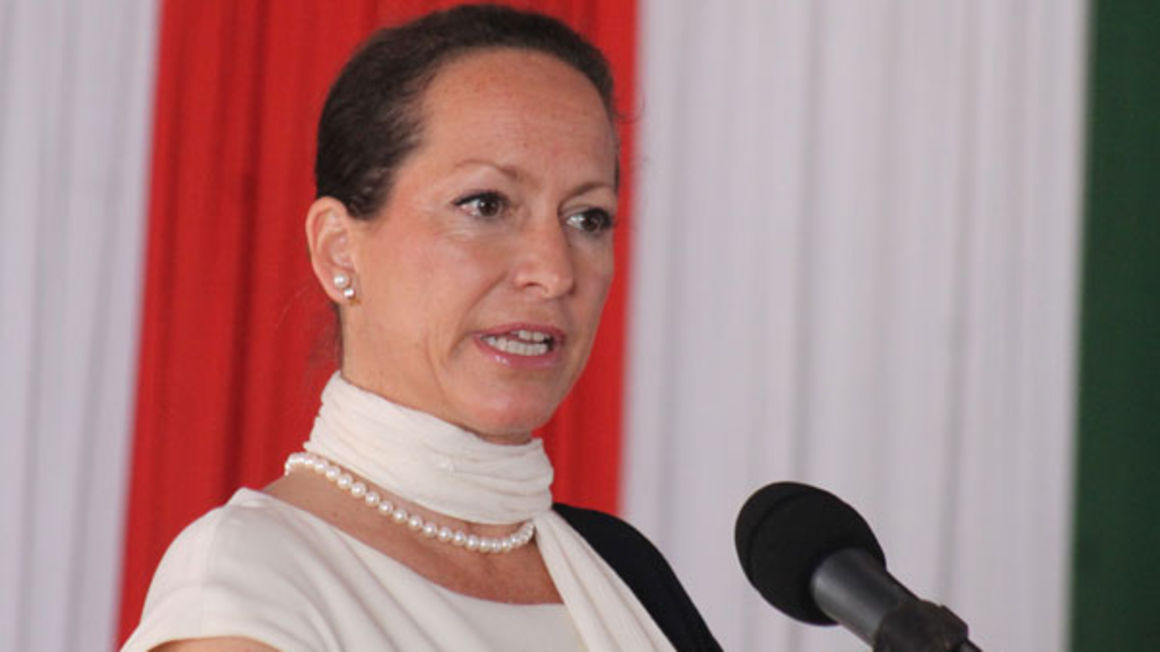
Princess Zahra Aga Khan, who represented the Aga Khan at the Awards ceremony in Muscat, urged for more emphasis on projects that tackled physical and environmental concerns. FILE PHOTO | NMG
Six winners of this year’s Aga Khan Award for Architecture have received a joint cash prize of $1 million (Sh121.45 million) for innovative design of buildings that address environmental concerns and the needs of local communities.
The projects were selected from 20 large- and small-scale ventures, urban and rural schemes, homes, workplaces, and public spaces that the jury visited and evaluated out of the 463 projects from 55 countries nominated for this year’s award.
“Over the years, the Award has been a lighthouse to those who feel we can design and build differently; to those who believe we have a responsibility to build appropriately – with thought, with consideration, and with the knowledge that architecture at its best is an inherently pluralistic enterprise,” said Princess Zahra Aga Khan who represented the Aga Khan at the awards ceremony in Muscat.
The winning projects are based in Bangladesh, Indonesia, Iran, Lebanon, and Senegal.
The Aga Khan Award for Architecture, now in its 45th year, was established to encourage architectural excellence by recognising innovative use of local resources and appropriate technology to address the physical, social and economic needs, and the cultural aspirations of communities in which Muslims have a significant presence.
The Aga Khan Award for Architecture pays particular attention to building schemes that use local resources and appropriate technology in innovative ways and to projects likely to inspire similar efforts elsewhere.
Princess Zahra Aga Khan, who represented the Aga Khan at the Awards ceremony in Muscat, urged for more emphasis on projects that tackled physical and environmental concerns.
“Over the years, the Award has been a lighthouse to those who feel we can design and build differently; to those who believe we have a responsibility to build appropriately – with thought, with consideration, and with the knowledge that architecture at its best is an inherently pluralistic enterprise,” she said.
“Your projects acknowledge the needs of diverse communities, respect the natural world, enhance the quality of life, and are models for the entire world,” Princess Zahara added.
A Senegalese school project was among the six winners.
Kamanar Secondary School in the town of Thionck Essyl in the county’s northwest was built in 2020 by David Garcia and Aina Tugores, both architects from Dawoffice Studio in Barcelona.
The school has a unique design that encompasses ‘‘the multiple scales of urbanism, landscape, architecture and building technologies with equal commitment and virtuosity’’
Award’s jury said that the site’s topography and flora are the key founding conditions of the project, which prompted the introduction of a grid of classroom pods organised around tree canopies and the adoption of their shade as social spaces that serve students and teachers alike.
Others that won are Urban River Spaces Project, and Community Spaces in Rohingya Refugee Response, Cox’s Bazar, in Bangladesh; Banyuwangi International Airport in East Java, Indonesia, and Argo Contemporary Art Museum and Cultural Centre, Tehran, Iran.
The Urban River Spaces Project provides residents with access to the Nabaganga River.The project includes two ghats – steps leading down to platforms at the river, with adjacent walkways and the opening of obstructed pedestrian pathways constructed by locally available materials such as brick and concrete.
The Community Spaces in Rohingya Refugee Response programme consists of six sustainably built structures in the world’s largest refugee camps, housing Rohingya fleeing Myanmar’s genocidal violence, in Cox’s Bazar, Bangladesh. The safe space was constructed very low to withstand cyclones and with an exterior scheme that avoids the disturbance caused to visiting elephants by the blues and pinks of standard camp structures.
Serving over 1,100 passengers daily, Banyuwangi International Airport in East Java, Indonesia is designed to cater to the hot climate through a large-scale, contemporary interpretation of vernacular passive design principles.
Openings and overhangs are optimised for temperature control through natural ventilation and shading.
Argo Contemporary Art Museum and Cultural Centre - a former brewery – has been converted into a private museum for contemporary art in Tehran, Iran.
The Iranian-Austrian architect aimed to create a dialogue between old and new by inserting a new foundation and metal structure to support floating concrete floors and roofs independently of the original exterior walls, thus allowing generous ceiling heights of up to 12 metres for the climate-controlled galleries.
Lastly, the Niemeyer Guest House part of the Rachid Karami International Fair complex in Tripoli, Lebanon has been renovated from existing structures and turned into a design platform and production facility.
Called Minjara, the space was inaugurated in 2018 and is meant to be a space for suppliers, producers, and designers of furniture, an industry Tripoli was once famed for.
The jury explained their selection of winners as being “open, free, public spaces… with a capacity to heal and restore a sense of dignity”
“We looked for quality, not only of the architectural space, but the quality of life and social relationships facilitated by architecture – the generosity and beauty that architecture can strive to make more accessible,” it said.
“It is hoped that the winning projects will inspire those involved in the built environment, such as architects, clients, decision-makers, builders, and users; helping them envision architecture that will address current issues and enhance the future quality of life” it added.
The prize-giving ceremony was conducted in Muscat—a preferred host city for the event because it features contemporary Islamic architecture ranging from the Sultan Qaboos Grand Mosque to the Royal Opera House, as well as traditional adobe homes and restored forts.
The Aga Khan Award for Architecture was established in 1977 by His Highness the Aga Khan, 49th hereditary Imam of the Ismaili Muslims, ‘‘to identify and encourage building concepts that successfully address the needs and aspirations of communities’’ in which Muslims have a significant presence.
→ ekivuva@ke.nationmedia.com




No comments :
Post a Comment